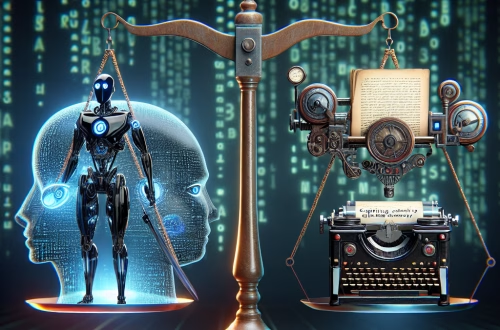AI-Powered Predictive Maintenance Solutions
Summary:
AI-powered predictive maintenance solutions use artificial intelligence to forecast equipment failures before they occur, helping businesses reduce downtime and optimize maintenance costs. These solutions rely on machine learning models, IoT sensors, and real-time data analytics to detect anomalies and predict wear and tear. Industries such as manufacturing, energy, and transportation benefit significantly from these systems by improving operational efficiency and extending equipment lifespan. For newcomers to AI, understanding these solutions provides insight into how AI is transforming industrial maintenance strategies.
What This Means for You:
- Cost Savings: AI-powered predictive maintenance minimizes unexpected equipment breakdowns, reducing costly emergency repairs. By adopting these solutions early, businesses can shift from reactive to proactive maintenance strategies.
- Actionable Insights: Implement sensor-based monitoring and AI analytics to track equipment health. Start with pilot programs on critical machinery to measure efficiency gains before scaling up.
- Improved Safety: Early detection of potential failures prevents hazardous incidents. Ensure your AI models are trained on high-quality historical data to improve prediction accuracy.
- Future Outlook or Warning: While AI-powered predictive maintenance offers significant benefits, reliance on poor-quality data can lead to false predictions. Businesses must ensure robust data collection and model validation processes to avoid costly mistakes.
AI-Powered Predictive Maintenance Solutions
Artificial intelligence is revolutionizing the way industries approach maintenance by predicting failures before they happen. AI-powered predictive maintenance (PdM) combines machine learning, Internet of Things (IoT) sensors, and big data analytics to monitor equipment health and alert operators about potential issues. This proactive approach is far more efficient than traditional reactive or scheduled maintenance, reducing downtime and cutting costs.
How AI-Powered Predictive Maintenance Works
AI-powered predictive maintenance systems gather real-time data from machinery using IoT sensors that track vibrations, temperature, pressure, and other key indicators. Machine learning models analyze this data to identify patterns associated with impending failures. Over time, these models improve in accuracy by learning from historical maintenance records and past failures.
Best Uses for AI-Powered Predictive Maintenance
This technology excels in industries where equipment reliability is critical:
- Manufacturing: Detecting anomalies in assembly lines to prevent costly stoppages.
- Energy Sector: Monitoring turbines and generators for early signs of malfunction.
- Transportation: Predicting engine failures in vehicles and aircraft to avoid accidents.
Strengths of AI-Powered Predictive Maintenance
The biggest advantages include:
- Reduced unplanned downtime
- Lower maintenance costs by preventing catastrophic failures
- Extended equipment lifespan through optimized servicing
- Improved worker safety by identifying risks before they escalate
Weaknesses and Limitations
Despite its benefits, AI-powered predictive maintenance has challenges:
- Requires high-quality historical data for accurate predictions
- Initial setup costs for IoT sensors and AI infrastructure can be high
- AI models may generate false positives if not properly calibrated
Key Considerations for Implementation
Before deploying AI-powered predictive maintenance, businesses should:
- Start with a pilot program on critical equipment
- Invest in reliable sensor technology
- Work with AI experts to fine-tune prediction models
People Also Ask About:
- What industries benefit most from AI-powered predictive maintenance?
Manufacturing, energy, transportation, and healthcare gain the most due to their reliance on high-value equipment. Predictive AI helps these sectors avoid costly failures and optimize maintenance. - How accurate are AI-based predictive maintenance systems?
Accuracy depends on data quality and model training, but well-implemented solutions can achieve 85-95% prediction reliability for common failure modes. - What is the cost of implementing AI-powered predictive maintenance?
Costs vary based on scale but typically include IoT sensors, cloud computing, and AI software. Small-scale deployments may start at $10,000-$50,000, while enterprise-wide systems can exceed $1M. - Can AI-powered predictive maintenance replace human technicians?
No—AI enhances human decision-making by providing early warnings, but technicians remain essential for actual repairs and validation of AI predictions.
Expert Opinion:
The adoption of AI-powered predictive maintenance is accelerating, but businesses must ensure proper data governance and model explainability. Over-reliance on AI without human oversight can lead to overlooked risks, particularly in industries with strict safety regulations. Continuous monitoring and updating of algorithms are necessary to maintain accuracy as equipment and operational conditions evolve.
Extra Information:
- IBM’s Guide to Predictive Maintenance – A useful primer on how AI and IoT enable predictive maintenance across industries.
- McKinsey Report on AI in Manufacturing – Highlights real-world case studies where AI-driven maintenance improved efficiency.
Related Key Terms:
- AI-driven predictive maintenance for industrial equipment
- Machine learning for equipment failure prediction
- IoT-based AI maintenance solutions in manufacturing
- Best predictive maintenance tools for small businesses
- AI-powered predictive analytics for HVAC systems
Check out our AI Model Comparison Tool here: AI Model Comparison Tool
*Featured image generated by Dall-E 3




